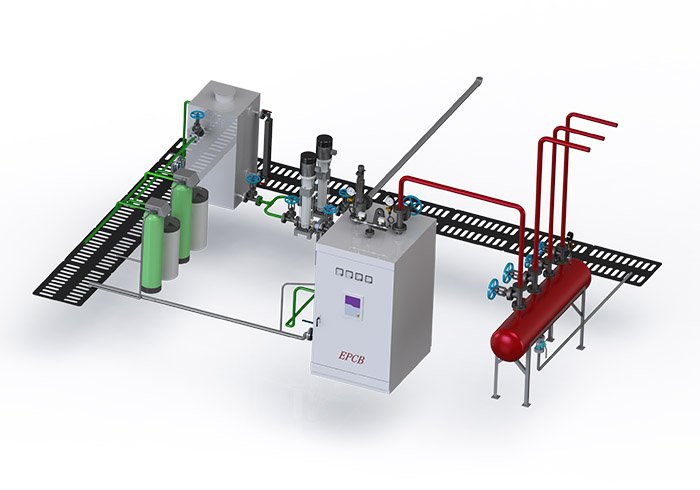Basic Concept and Principle of Fire Tube Boiler
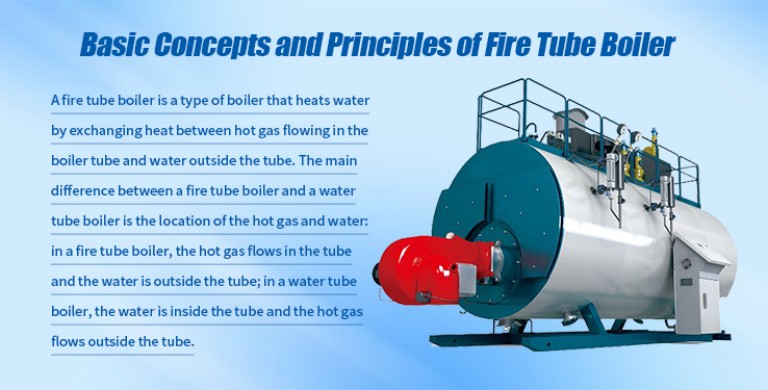
What is Fire Tube Boiler?
Fire Tube Boiler is a kind of boiler which takes the hot gas generated by fuel combustion as the main heat source, and heats or generates steam through the heat exchange between the fire tube in the boiler and the external water. This design transfers heat to water in the way that hot gas flows through the pipe inside the boiler and water surrounds the fire pipe, thus heating the water into hot water or steam. Fire tube boilers are widely used in small and medium-sized industrial and commercial scenes because of their simple structure, reliable operation and strong adaptability.
Working Principle of Fire Tube Boiler
The core working principle of the fire tube boiler is the heat exchange process, that is, the heat is transferred to the boiler water around the fire tube through the high-temperature flue gas generated by the fuel combustion in the fire tube, and the heat energy is converted. The specific process is as follows:
Fuel burns in the combustion chamber (such as coal, natural gas, oil, etc.), producing high-temperature flue gas, which then enters the fire tube (or flue tube), flows along the path of the fire tube, and gradually transfers heat to boiler water outside the fire tube. Water absorbs heat by contacting the surface of the fire tube, and the temperature gradually rises, and finally it is heated into hot water or steam. After the heat exchange is completed, the temperature of flue gas is significantly reduced and discharged from the boiler system through the chimney.
Contrast term | Fire Tube Boiler
| Water Tube Boiler |
The position of hot air and water | Hot air flows in the tube, and water surrounds the fire tube outside the tube. | Water flows in the pipe, and hot air surrounds the water pipe outside the pipe. |
Structural complexity | Simple structure, suitable for small and medium-sized application scenarios. | The structure is complex, and it is suitable for high-pressure and large-capacity industrial demand |
Heat exchange efficiency | The heat exchange area is limited and the efficiency is relatively low. | Large heat exchange area, higher efficiency and higher steam pressure. |
Operating pressure | Suitable for medium and low pressure working conditions, and the pressure usually does not exceed 2.5MPa. | Suitable for high-pressure working conditions, the pressure can reach more than 10MPa. |
Maintenance requirements | Low maintenance cost and convenient maintenance. | The maintenance cost is high, and the requirements for operation monitoring and management are high. |
Applicable scenario | Small and medium-sized demand scenarios such as small factories, food processing and heating. | Industrial scenes of high temperature and high pressure demand such as power plant, chemical industry and shipbuilding. |
Main Types and Applications of Fire Tube Boiler

Common Types of Fire Tube Boilers:
Horizontal reflux tube boiler (HRT)
Horizontal return tube boiler is a traditional fire tube boiler, which adopts horizontally arranged fire tube structure. Its combustion chamber is located below the boiler, and the flue gas flows back and forth in the boiler through horizontally arranged fire pipes, and is finally discharged through the chimney. The whole boiler is surrounded by a large amount of water, forming an efficient heat exchange structure.
Features:
The simple structure makes the boiler easy to manufacture and install, which is very suitable for small-scale industrial needs; The design of water surrounding the fire tube ensures more direct heat transfer, thus achieving higher thermal efficiency; At the same time, the horizontal layout is convenient for cleaning fire pipes and maintaining equipment, which greatly improves the convenience and reliability of daily use.
Application scenario:
it is commonly used in small factories, heating systems and food processing industries, and is suitable for medium and low pressure steam demand.
Marine boilers
Marine boiler is a fire tube boiler designed for marine power system and domestic heating, and usually adopts compact design to save space. It usually has a combustion chamber and a plurality of smoke pipes, and is equipped with special corrosion-resistant materials to cope with the marine environment. Marine boilers mostly adopt wet back or dry back design, and the structure is adjusted according to the needs of ships.
Features :
Compact design makes the boiler occupy small space, which is very suitable for the limited installation area of ships; The use of corrosion-resistant materials can adapt to the high humidity and salinity in the marine environment and effectively prolong the service life of the equipment; It is multifunctional, can provide power steam and hot water at the same time, and fully meet the power and life needs of ships; In addition, the boiler strictly follows the manufacturing standards and is equipped with safety protection devices to ensure high safety operation under special working conditions of the ship.
Applicable scenarios:
It is widely used for heating the power system of cargo ships, oil tankers, fishing boats and other ships and the living facilities of crew members.
Comparison Between Wet Back and Dry Back Designs:
Wet back and dry back are two structural forms in the design of industrial boilers (especially fire tube boilers), which are mainly reflected in the structural differences at the back end of the furnace.

Definition and structure
Wet back design: the rear heating surface is surrounded by water (such as water wall structure). The back end of the furnace is connected with the water jacket of the boiler to provide better heat exchange.
Dry back design: the rear part is insulated by refractory bricks or thermal insulation materials, and the rear end of the furnace is not in contact with water. After the hot gas directly impacts the refractory at the back end, it turns to the pipeline.
Thermal efficiency
Wet back design: more heat is transferred to boiler water, and the thermal efficiency is higher. Reduce heat loss and exhaust temperature.
Dry back design: the thermal efficiency is relatively low, because some heat will be lost to the refractory bricks. The exhaust temperature is high.
Application scenarios
Wet back design: more suitable for scenes requiring high efficiency and long-term continuous operation, such as industrial production.
Dry back design: it is often used in small boilers or scenes that need flexible operation because of its low initial cost.
Industrial and institutional Application Scenarios
Fire tube boiler has become a reliable thermal energy support equipment in many industries because of its stable performance and low maintenance requirements. In the health care industry, provide hot water, disinfection and heating support for hospitals to meet the needs of wards, operating rooms and laboratories.
In processing plant workshop, it is widely used in food processing and light industry to provide economical and efficient medium and low pressure steam for cooking, disinfection, drying and equipment cleaning.
In educational facilities, it supports campus heating, hot water supply and laboratory equipment operation, which runs quietly and occupies a small area, and is suitable for schools and libraries.
In government buildings, through district heating, hot water supply and emergency use, it meets the needs of office buildings and public facilities, has the advantages of high cost performance and easy installation, and meets the requirements of public budget management.

Technical Innovation and Efficiency Optimization of Fire Tube Boiler

Three-return and Four-return Design to Improve Heat Transfer Efficiency
Three-return and four-return design are the key technological innovations of fire tube boilers, which play a significant role in improving heat transfer efficiency. Three-return design ensures full absorption of heat through three flows of flame and flue gas: the first return high-temperature flue gas washes the furnace lining to transfer a lot of heat, and the second and third returns further increase the heat transfer area and improve the thermal efficiency through the flue pipe, which is suitable for small and medium-sized industrial boilers. The four-return-stroke design adds the fourth return stroke on this basis, and prolongs the flue gas flow path, so that the heat utilization is more sufficient, the exhaust temperature is lower, and the efficiency is improved by 3%-5%, which is suitable for scenes with high energy-saving requirements. These two designs can improve the heat transfer coefficient and avoid heat loss by increasing the heating area and optimizing the flue gas flow rate, thus achieving more efficient heat energy utilization.
Economizer's Contribution to Fuel Saving
Economizer is an important energy-saving device of fire tube boiler, which can significantly reduce fuel consumption by recovering exhaust heat to preheat feed water. Its high-temperature resistant metal heat exchange tube absorbs the residual heat of flue gas and sends preheated water to the boiler, thus reducing the fuel demand. Industrial data show that the installation of economizer can reduce fuel consumption by 5%-10%, and the boiler efficiency will increase by about 1% for every 20℃ reduction of exhaust gas temperature. The economizer made of corrosion-resistant materials has long service life, stable energy-saving effect, reduced thermal pollution, optimized boiler thermal system and realized efficient energy-saving operation.
Advantages of Fire Tube Boiler in Reducing Carbon Emissions.
Firetube boilers are outstanding in reducing carbon emissions by virtue of efficient design and energy-saving technology. Through the combination of three-return or four-return design and economizer, fuel combustion is more complete and energy consumption is significantly reduced. Advanced burners optimize the mixing of air and fuel, realize low-oxygen combustion, and cooperate with intelligent control system to reduce unburned particulate matter emissions. In addition, the fire tube boiler is compatible with clean fuels such as biomass and natural gas, which further reduces the carbon footprint. When using natural gas, the CO2 emission is about 50% lower than that of coal-fired boilers, making it an ideal choice for industrial energy conservation and emission reduction.
Maintenance and Cost Comparison of Wet Back and Dry Back Boilers

Maintenance and Cost of Wet Back Boiler
Wet-back boiler adopts full water back design, that is, the back of the boiler is completely surrounded by water, and when the flue gas flows through the back area, it directly contacts with water for heat exchange. This design can effectively reduce the temperature fluctuation of the boiler back structure by evenly absorbing the heat of flue gas through water, thus reducing the thermal stress damage caused by thermal expansion and contraction, and significantly improving the durability and stability of the boiler. Because of the existence of the rear water wall, the wet back boiler does not need to use refractory materials, thus avoiding the need for frequent replacement of refractory bricks or castable materials due to high temperature deterioration, making the maintenance work mainly focus on water quality management and boiler pipeline cleaning, with lower maintenance frequency and lower cost. In addition, this design can effectively protect the steel at the back of the boiler from direct erosion by high-temperature flue gas, reduce the risk of corrosion and cracks, and greatly extend the service life of the boiler, making it an efficient and economical choice in long-term operation.
Maintenance and Cost of Dry Back Boiler
The rear area of dry-back boiler is designed with refractory materials, and the flue gas enters the next return journey through the rear reflecting surface. Its structural characteristics have a unique impact on maintenance and application scenarios. Refractory materials, such as refractory bricks and castables, need to withstand the erosion and thermal cycle of high-temperature flue gas, and are prone to cracking, falling off or failure after long-term use, so they need to be inspected and replaced regularly, and usually need to be overhauled every 2-3 years, and the maintenance cost is relatively high. The structure of dry-back boiler is relatively simple, and the initial manufacturing cost is low. It is suitable for small and medium-sized industrial boilers or scenes with low requirements for thermal efficiency, especially under the working conditions of short running time or large load fluctuation. However, in terms of long-term continuous operation requirements and comprehensive economy, its performance is not as superior as that of wet-back boilers.
The Cost Difference Between the Two Designs in Long-term Use
The cost difference between wet back boiler and dry back boiler in long-term use is mainly reflected in maintenance cost, energy efficiency and service life. Wet-back boiler only needs daily water quality management and cleaning because it doesn't need refractory maintenance, so the maintenance cost is low and the frequency is less, while dry-back boiler needs to check and replace refractory regularly, which not only increases the direct material cost, but also brings indirect losses due to maintenance and shutdown. In terms of energy efficiency, wet-back boiler can significantly save fuel costs in long-term operation because of its higher thermal efficiency and lower energy consumption; In contrast, the heat transfer efficiency of dry-back boiler is low, which leads to greater heat loss and higher operating cost. In addition, the design of wet-back boiler is more durable, and the average service life can reach more than 20 years, while the dry-back boiler usually needs to be replaced earlier because its rear structure is easily damaged by high temperature and its service life is relatively short. Therefore, from the comprehensive economic point of view, the cost advantage of wet back boiler in long-term operation is more significant.
How to Choose a Suitable Fire Tube Boiler?

Selection according to pressure, fuel type and efficiency requirements
The operating pressure, fuel type and efficiency requirements should be considered comprehensively when selecting the fire tube boiler. Food processing industry usually needs medium and low pressure steam, while chemical industry requires high pressure steam, so it should be selected according to specific process requirements. In the choice of fuel, decisions can be made according to the fuel supply and environmental protection requirements: natural gas is clean and low emission, which is suitable for areas with high environmental protection requirements; Biomass fuel is suitable for enterprises wishing to reduce carbon emissions; Coal, on the other hand, is suitable for scenarios that focus on fuel cost control, but it needs to ensure compliance with relevant environmental regulations. In terms of efficiency, the high-efficiency wet-back boiler is more suitable for long-term operation, while the dry-back boiler with lower initial cost can be selected for intermittent operation to achieve the balance between economy and performance.
Customized services meet special application scenarios
Customized design can meet the special needs of different industries and scenarios. For the highly corrosive environment, corrosion-resistant materials can be used to improve the durability of the equipment, and at the same time, the compact boiler can be designed to adapt to the limited installation space; In terms of fuel and environmental protection, the combustion system can be customized to adapt to special fuels and equipped with low-nitrogen burners to meet strict environmental protection requirements; By adding heat recovery devices such as economizer and condenser, the utilization rate of heat energy is effectively improved and the operation cost is further saved; In addition, the boiler can also be equipped with PLC intelligent control system to realize remote monitoring and operation data optimization, which greatly improves the operation efficiency and safety performance.
EPCB boiler solution
EPCB provides diversified boiler selection and comprehensive services by virtue of its technical advantages. Its products cover fire tube boilers with rich fuel types from low pressure to high pressure, meeting the diversified needs of various industries; By adopting three-return or four-return design with economizer and condenser, the boiler efficiency is significantly improved and fuel consumption is reduced; Support all-round customization service, adjust boiler size according to customer demand, adapt special fuel and meet complex process requirements, and provide advanced automation system; In addition, EPCB also provides perfect after-sales service, including installation and debugging, operation training, remote technical support and regular maintenance suggestions, to ensure the long-term efficient and stable operation of boilers and create greater value for customers.
Future Trend of Fire Tube Boiler
With the advancement of Industry 4.0, the application of intelligent technology in fire tube boilers has continuously improved the operation efficiency and safety. Real-time monitoring of operating parameters such as pressure and temperature through sensor networks, combined with big data analysis and cloud computing technology, optimize fuel utilization, reduce energy consumption, and predict failure risks. The automatic alarm system can give an alarm in time and start protective measures under abnormal conditions, and can also notify operators through remote terminals to ensure the safety of unattended or night operation.
In the future, the heat exchange performance of fire tube boilers will be significantly improved through the application of new materials. Metals with high thermal conductivity can improve the heat transfer efficiency, while materials with corrosion resistance and high temperature resistance can enhance the durability of boilers in high temperature and high humidity environment and prolong the service life of equipment. The application of lightweight materials not only reduces the weight of the boiler, facilitates transportation and installation, but also reduces the energy consumption loss. These material innovations not only improve boiler efficiency, but also reduce maintenance costs and bring higher economic benefits to enterprises.
In addition, fire tube boilers are gradually integrated with renewable energy systems to improve energy efficiency and environmental performance. Preheating boiler feed water by solar heat collection system can reduce the use of fossil fuels and reduce carbon emissions; Adapt to biomass fuel, realize the combination of clean energy and traditional technology, and reduce carbon footprint. These innovations help fire tube boilers meet the needs of low-carbon economy and provide more sustainable energy solutions for enterprises.
Conclusion
Fire tube boiler has become an ideal choice for various industries because of its efficient heat exchange, flexible fuel adaptation and renewable energy integration. Combined with intelligent technology and new materials, it has remarkable potential for high-efficiency and low-carbon sustainable development. Select the appropriate boiler model according to the demand, and comprehensively consider the requirements of pressure, fuel and efficiency. For special working conditions, heat recovery optimization and intelligent upgrade can be realized through customized design.
If you are interested in fire tube boilers, please contact EPCB boiler, a professional boiler manufacturer, to obtain efficient, environmentally friendly and customized solutions, and enjoy comprehensive technical support to help enterprises achieve energy-saving and sustainable development goals.
FAQ
What are the main advantages of fire tube boilers?
The fire tube boiler has the advantages of simple structure, reliable operation and high thermal efficiency. Its three-return or four-return design makes heat transfer more sufficient, adapts to various fuels such as natural gas, biomass and coal, has low maintenance cost and simple operation, and is very suitable for wide application in industrial fields.
Which is more suitable for industrial application, wet back boiler or dry back boiler?
Wet-back boiler is the best choice for long-term continuous operation because of its full water back design, which has higher thermal efficiency, lower maintenance requirements and longer service life. Dry-back boiler is suitable for intermittent operation or scenes with low efficiency requirements because of its simple structure and low upfront cost. The choice depends on the specific working conditions and budget requirements.
How to maintain the Fire Tube Boiler to prolong its service life?
Reasonable daily maintenance and regular overhaul are the keys to prolong the service life of boilers and reduce operating costs. Regular cleaning of boiler pipes can effectively prevent fouling from affecting thermal efficiency, while maintaining water quality can avoid corrosion and scaling problems; Check the seals and combustion system regularly to ensure the safe and efficient operation of the boiler; In addition, the installation of intelligent monitoring system can monitor key operating parameters in real time and warn potential failures in time, thus ensuring the stability and operating efficiency of equipment.
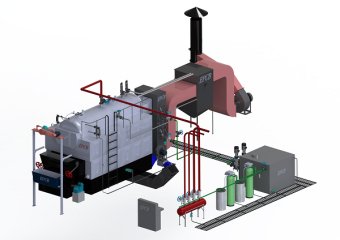 Steam Boiler
Steam Boiler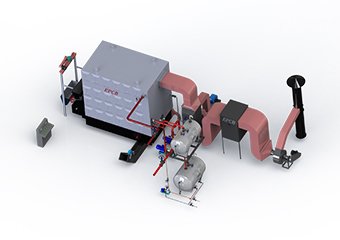 Thermal Oil Boiler
Thermal Oil Boiler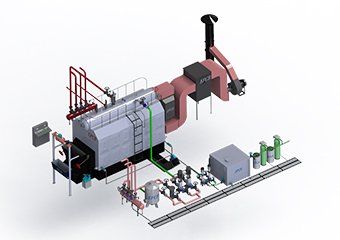 Hot Water Boiler
Hot Water Boiler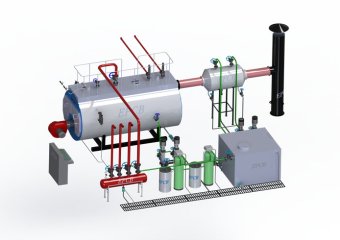 Steam Boiler
Steam Boiler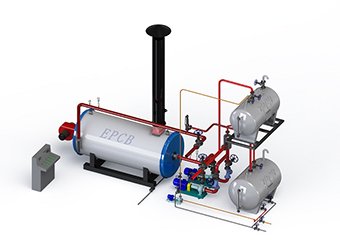 Thermal Oil Boiler
Thermal Oil Boiler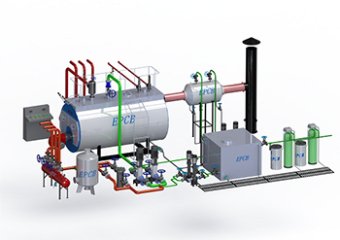 Hot Water Boiler
Hot Water Boiler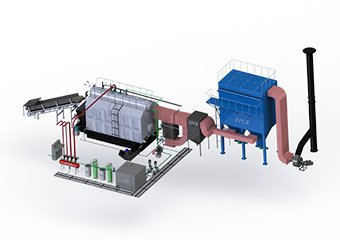 Steam Boiler
Steam Boiler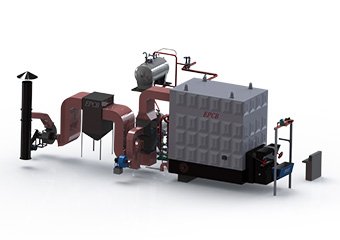 Thermal Oil Boiler
Thermal Oil Boiler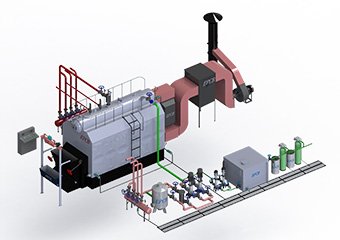 Hot Water Boiler
Hot Water Boiler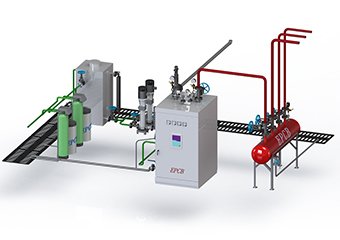 Steam Boiler
Steam Boiler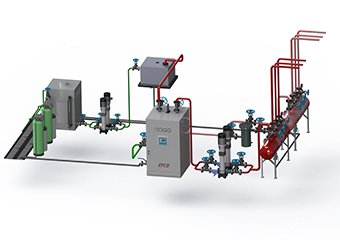 Hot Water Boiler
Hot Water Boiler






















